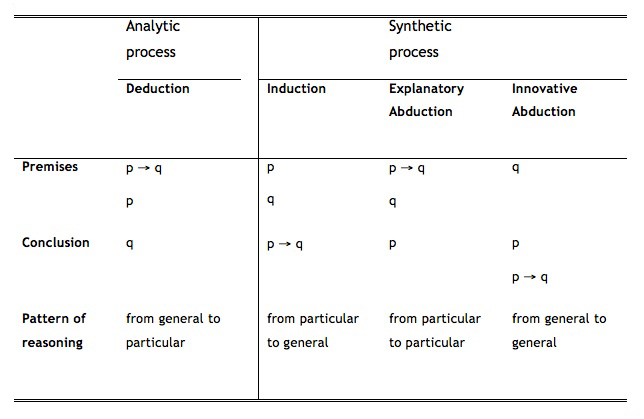Design at the Open University, has a history that brings together different research traditions and thematic areas. One of those research traditions is focussed on mathematical and computational studies of design and can be traced back to Lionel March who was appointed Design Chair at the OU in 1976 and founded the Centre for Configurational Studies. I was saddened to hear of his passing last week and many of my colleagues who worked with him at the OU and elsewhere, will have a lot to say about his work and contributions.
Although I have only met him briefly once, I feel he has made a big contribution to my own thinking both directly and indirectly, and so as a small tribute to him I wanted to write a short note about the term abduction (not as forceful removal, but as a logic mode of reasoning) since he was the first to connect design with this term.
Although the notion has been around since Aristotle, the modern sense of the term was introduced by philosopher and mathematician Charles Sanders Peirce who defined abduction as a type of reasoning in logic also called ‘inference to the best explanation’. That is a type of reasoning that starts from observations of effects and produces explanations for those effects. It has the exact opposite direction to deductive reasoning, which infers consequences by reference to a general law or principle. To complicate things, there is also the notion of induction. Induction uses observations about causes and effects to produce general rules of associating them.
In his article on ‘The logic of design and the question of value’ Lionel March (1976) observed that deduction is an analytical process and can be associated with what in design is commonly considered as decomposition. By contrast, induction and abduction correspond to synthetic processes: they correspond to creative, productive reasoning. Abduction has since been strongly linked to creativity and the view of design as a process that essentially generates something new, as opposed to for example, finding an answer to a given problem or solving a puzzle.
Here is a summary table of the different types of logical reasoning (adapted from Roozenburg and Eekels, 1995):

Abduction also helps us understand design as a distinct type of knowledge creation. Although deduction and induction are both also used in design, designers tend to learn about reality by constructing new instances of that reality, by constructing ‘proofs of concepts’.
What is your view about those different modes of reasoning in design? Are you more of a deductive, inductive of abductive ‘type’?
Links to explore:
A little bit of history of Design at the OU: http://www9.open.ac.uk/mct-ei/research/design/history-design
Lionel March’s artistic compositions on Flickr: https://www.flickr.com/photos/lionelmarch/
References:
March, L. (1976). The Logic of Design and the Question of Value. In The Architecture of Form. L. March ed. Cambridge University Press: 1-40.
Roozenburg, N. F. M. and J. Eekels (1995). Product Design: Fundamentals and Methods. Chichester, John Wiley & Sons.
Image credit: The thumbnail image is from the cover of The Architecture of Form.

Leave a Reply